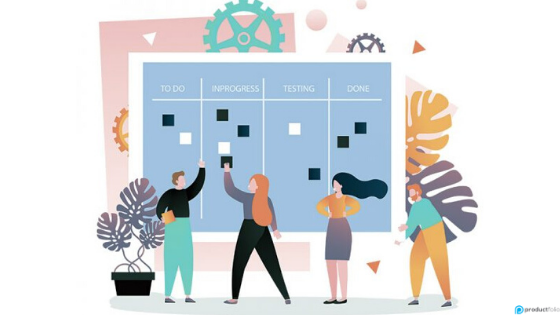When carefully planned, a product roadmap can greatly help to make the development and delivery of a product a lot easier. It provides direction and helps a product manager (PM) to know the status of work and what needs to be done.
There are diverse approaches that PMs take to building a roadmap, depending on what product they are working on. We discuss in this article the most common approaches for creating a product roadmap.
The Need for a Product Roadmap
A product roadmap is a strategic document that makes it easier for a PM to present to stakeholders a clear picture of what a product is and what goals it aims to achieve. It is a high-level plan that charts an idea, communicates a product strategy, and helps get stakeholders to buy in.
A product roadmap definition might suggest that it is a fixed, unchanging document. But it isn’t. Rather, it is a living document that can change over time, especially when it is an agile product roadmap.
There are several benefits to having a roadmap. A major one is that it makes it easier for a PM to communicate what he or she is trying to achieve and why.
A good roadmap lets teams have a shared understanding of the product. It could also help to identify likely resource gaps ahead of time.
Creating a Product Roadmap
Each company has certain factors that influence how it does roadmapping. Among others, these factors include its culture, vision, and the preferences of its team members.
What this means is that the product roadmap of one company might look nothing like another’s. Also, these documents are typically tailored to specific audiences and so may differ within the same company.
The best roadmap to create at a point in time depends very much on the phase of a product’s lifecycle. What works well for a phase might fail woefully in another.
The book, “Crossing the Chasm,” provides some help in grasping the relevance of these different phases in a product lifecycle. In it, Geoffrey Moore identified different groups of users at diverse stages of a technology product’s lifecycle. These include:
- Innovators
- Early Adopters
- Early Majority or “Pragmatists”
- Late Majority or “Conservatives”
- Laggards, or latecomers
Companies typically focus more on the Early Majority. However, Innovators and Early Adopters contribute a lot to making a product attractive to the former group.
We discuss in the next sections the most common roadmap creation frameworks and the stages they are most relevant for.
Product Roadmap with Timeline
This is somewhat the traditional roadmap definition: a document with a timeline of what to do. Stakeholders like to have an idea of when something would be done and that’s the main reason for this.
Timeline product roadmap isn’t helpful until you are well into the Early Majority stage of a product life cycle. At that point, a timeline would be helpful to ensure that a product performs to expectations in the mainstream market.
Marketing and sales teams, for instance, will need to have an idea of when the product you are working on would be ready. They need dates.
Product Roadmap with No Dates
Timeline product roadmaps leave little to no room for changes. Yet, change is the only constant thing.
A roadmap with no dates relaxes what a roadmap with a timeline stands for. It is the answer to the call of many professionals for a framework that gives more room for flexibility. This type of document gets rid of the exactness of dates.
An agile product roadmap having no rigid dates is friendlier to discovery and iteration. It is perfect for companies that are at the earliest product lifecycle stages when priorities are changing almost always.
Hybrid Product Roadmap
This last framework combines elements of the previous two in a way. A hybrid product roadmap uses dates, but it is not as rigid as a regular timeline document. It enables you to plan into the future while not sacrificing near-term flexibility.
Hybrid roadmaps are more suitable for the Early Adopters phase and the initial parts of the Early Majority phase. Companies cannot completely afford to eliminate dates during these periods to ensure that they deliver initiatives committed to.
Key Steps to Creating a Product Roadmap
There are several steps involved in creating a roadmap that truly helps. The most important ones include the following:
Defining vision and objectives –
You start by identifying what goals the product will achieve. Does it tie in with your company’s vision? Determine who the typical users are and show how the product relates to organization strategy.
Focusing less on features –
A secret to creating a roadmap for a winning product is not to put all your attention on features. You should focus more on the user or business needs and let that inform what features to include.
Keeping things simple –
Some PMs make the mistake of creating complex roadmaps in the hope of making things more detailed. You should aim instead to make your roadmap as simple as possible while clearly showing the progress being made.
Sharing –
It is very helpful to make your roadmap visible to all stakeholders. Sharing the document will let everyone have the picture of what is in focus clearly in their mind. This can promote team engagement and help you gain the backing of executives.
Reviewing and updating –
A product roadmap is not a static document, especially when you are working in agile. It is an ongoing process that requires taking note of all changes that occur over time. Therefore, you should create time to review the document and adjust it based on feedback and relevant developments.




